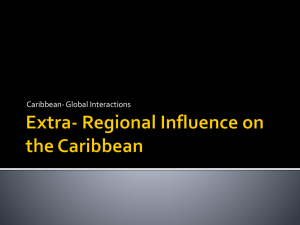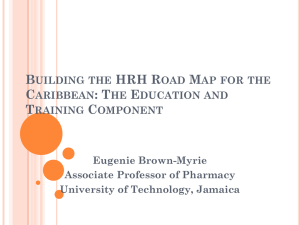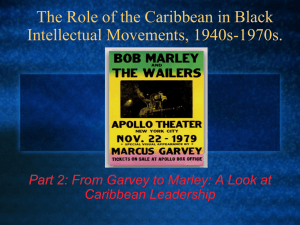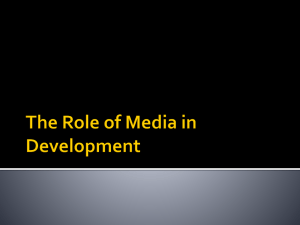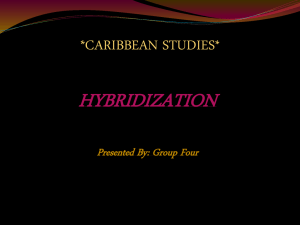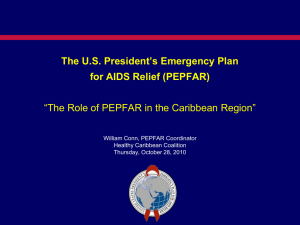From Negritude to Natty Dread
advertisement
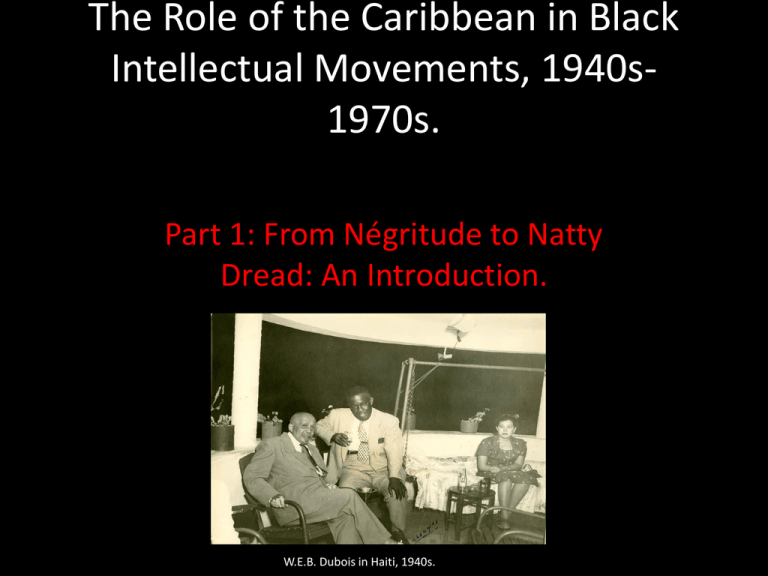
The Role of the Caribbean in Black Intellectual Movements, 1940s1970s. Part 1: From Négritude to Natty Dread: An Introduction. W.E.B. Dubois in Haiti, 1940s. Plan of Presentation • Background to Caribbean connections with North America and Intellectual Movements. • Historical example of the Haitian Revolution. • Caribbean Movement(s) and Intellectual Movements. • Intellectual Movements and Caribbean Connections. • Conclusions. FEEL FREE TO ASK QUESTIONS AT ANY TIME. The Caribbean The Haitian Revolution as Example of Caribbean Connections TO TOUSSAINT LOUVERTURE Caribbean Migration as a factor in Intellectual Exchange Source: Department of Homeland Security, Office of Immigration Statistics, 2003 Yearbook of Immigration Statistics (September 2004). Some Caribbean Intellectual Movements • -> Garveyism • ->Négritude/Negrismo • -> Noirisme • ->Marxism • -> Black Nationalism • ->Anti-Colonialism • -> Democratic Socialism • -> Rastafari Garveyism -Black Nationalism based on the teachings and philosophies of Marcus Garvey, from Jamaica. -The UNIA (United Negro Improvement Association) was based in Harlem, NY and Had over 1,000 chapters in 40 countries. -The height of Garveyism was 1930s but the movement would have enduring impact. 1930s-1940s:Négritude/Negrismo •Black cultural movement that began in Paris in the 1920s and spread in the 1930s among French colonial students. •Was heavily influenced by the Harlem Renaissance. •Involved a celebration of Black aesthetics and culture in art, poetry, writing, and intellectual thought. •Négritude influenced the Cuban variant, Negrismo in the 1930s. •For French and Spanish Caribbean intellectuals it was the defining black consciousness movement of the interwar years. 1930s-1940s: Indigénisme (Indigenous Movt - Haiti) Jean Price-Mars 1940s-1970s: Marxism • Since the period of the Great Depression Marxist ideas took firm root in Caribbean radical politics. The influences were from the U.S. (CPUSA) as well as U.S.S.R. • After WWII the Marxist movement expanded and influenced party politics, especially in Cuba, Jamaica, and Haiti. Marxism - Cuba 1920s-1950s Formed in 1920s. Had strong connections with U.S.S.R Suppressed by various governments. 1950s onward Influenced the revolutionary movement in Cuba that led to the Castro Revolution of 1959. Became the guiding ideology in Cuba from 1960s to present. Had a MAJOR influence on communist movements elsewhere in the Caribbean. Socialist Party Headquarters, Havana. Marxism - Jamaica 1940s-1950s Marxism in JA begins with Party formation in the early 1940s. The early Marxists were expelled during the Cold War pressures of the 1950s. 1960s-1970s Marxism grows among radical youth. They are influenced by the radical movements in Cuba following the Revolution and the radical movements in the U.S. in the 1960s. Several movements are created by Marxist Youth including: Young Socialist League; Workers liberation League; and Workers Party of Jamaica. Democratic Socialism • Launched by the PNP Government in Jamaica in 1974 as a response to the global crisis caused by recession in the early seventies. • Had earlier roots; Norman Manley drated a plan for democratic socialism in the 1960s. Built on the PNP’s reputation as being left from centre. • Incorporated several of the ideas of contemporary currents --Marxism in particular, as well as Black Nationalism and anti-Colonialism. Black Nationalism • • Drew heavily from the Civil Rights and Black Power in the U.S. Many of that era had Caribbean links, such as Stokely Carmichael/Kwame Ture, who was from Trinidad. Black Power in the Caribbean Walter Rodney, (Guyanese intellectual )1969: “Black Power in the West Indies means these three closely related things: 1)The break with imperialism which is historically white racist. 2)The assumption of power by the black masses of the islands. 3)The cultural reconstruction of the society in the image of the blacks. These are the areas with which we as black people must concern ourselves hereafter.” Rastafari Movement brings together many of the currents of the previous decades: Garveyism; Négritude; Black Nationalism; Black Power; Anticolonialism. Conclusions • The Caribbean has always been integrated with other countries in the Americas, particularly the U.S. • In the twentieth century these connections tightened as a result of increased movement across the region. • As the Caribbean entered a transformative phase, 1940s-1970s, it drew heavily on currents coming from North America, and in turn influenced these very currents. This influence guided the development of a complex interchange of movements and ideas across the region. Further Reading Evelyne Stephens & John Stephens, Democratic Socialism in Jamaica Matthew J. Smith, Red and Black in Haiti Selwyn Ryan, Race & Nationalism in Trinidad and Tobago Elizabeth Thomas Hope, Caribbean Migration Marcus Garvey, The Philosophy and Opinions of Marcus Garvey Magdaline Shannon, Jean Price Mars, the Haitian elite and the American Occupation J Michael Dash, Literature and Ideology in Haiti Sam Farber, Origins of the Cuban Revolution Reconsidered. Brian Meeks, Radical Caribbean Barry Chevannes, Rastafari: Roots and Ideology

